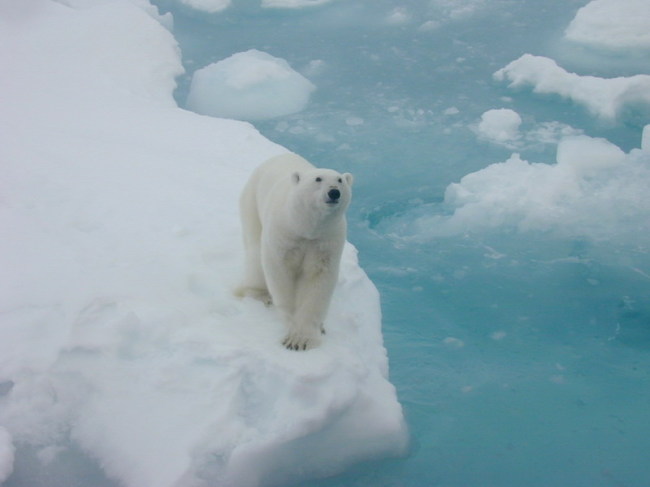Kuujjuarapik, Canada (AFP) ― Word spread quickly: a polar bear, then two, were spotted near this remote Inuit village on the shores of Hudson Bay, about 1,800 kilometers north of Montreal.
Children were whisked indoors. Hunters armed with rifles set out from Kuujjuarapik on snowmobiles in a blizzard to kill the intruders, before the bears could get close enough to take a bite out of any of the town’s 1,500 residents.
Clashes between bears and people so far south of the Arctic were unheard of a century ago.
“Polar Bears were just stories when I was growing up in the 1920s,” said elder Alec Tuckatuck.
Children were whisked indoors. Hunters armed with rifles set out from Kuujjuarapik on snowmobiles in a blizzard to kill the intruders, before the bears could get close enough to take a bite out of any of the town’s 1,500 residents.
Clashes between bears and people so far south of the Arctic were unheard of a century ago.
“Polar Bears were just stories when I was growing up in the 1920s,” said elder Alec Tuckatuck.

But there have been more and more sightings of late, he said, as warming forces the world’s largest carnivore to abandon its traditional ice-covered hunting grounds and migrate further south.
As of early December, stable ice had not yet formed on Hudson Bay, where the bears would traditionally feast on seals, adding layers of fat that would carry them through the next summer.
The summers in Kuujjuarapik are getting longer and winters are relatively “very short,” Tuckatuck commented. “We now have (only) seven months of snow,” he lamented.
This is having a dramatic impact on the lives of Inuit and bears alike ― and leading to more unwanted clashes between them, some even further south than Kuujjuarapik.
A polar bear was spotted in 2010 in Shamattawa, Manitoba, about 400 kilometers south of Hudson Bay.
In the Nunavut hamlet of Taloyoak, six intrepid polar bears had to be put down in the past three months after wandering into the community.
“They’re not cuddly little Coca-Cola bears,” Bob Lyall, of the local Hunters and Trappers Organization, told Canadian media. “They’re hungry bears coming through town and looking for food.”
In Kuujjuarapik, Inuit hunters have also had to search elsewhere than ice floes for food.
The bay ice, Tuckatuck said, “can break up (underfoot) at any time.”
Hunters cannot safely venture onto the ice in search of seals or beluga whales, and so they have turned their sights inland on caribou ― marking a major cultural shift away from the ice that long sustained their people.
-
Articles by Korea Herald




![[Herald Interview] 'Amid aging population, Korea to invite more young professionals from overseas'](http://res.heraldm.com/phpwas/restmb_idxmake.php?idx=644&simg=/content/image/2024/04/24/20240424050844_0.jpg&u=20240424200058)















